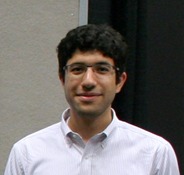Program Information
A Real-Time Method to Simultaneously Measure Linear Energy Transfer and Dose for Proton Therapy Using Organic Scintillators
F Alsanea*, F Therriault-Proulx , G Sawakuchi , S Beddar , UT MD Anderson Cancer Center, Houston, TX
Presentations
TH-CD-201-3 (Thursday, August 4, 2016) 10:00 AM - 12:00 PM Room: 201
Purpose: The light generated in organic scintillators depends on both the radiation dose and the linear energy transfer (LET). The LET dependence leads to an under-response of the detector in the Bragg peak of proton beams. This phenomenon, called ionization quenching, must be corrected to obtain accurate dose measurements of proton beams. This work exploits the ionization quenching phenomenon to provide a method of measuring LET and auto correcting quenching.
Methods: We exposed simultaneously four different organic scintillators (BCF-12, PMMA, PVT, and LSD; 1mm in diameter) and a plane parallel ionization chamber in passively scattered proton beams to doses between 32 and 43 cGy and fluence averaged LET values from 0.47 to 1.26 keV/μm. The LET values for each irradiation condition were determined using a validated Monte Carlo model of the beam line. We determined the quenching parameter in the Birk’s equation for scintillation in BCF-12 for dose measurements. One set of irradiation conditions was used to correlate the scintillation response ratio to the LET values and plot a scintillation response ratio versus LET calibration curve. Irradiation conditions independent from the calibration ones were used to validate this method. Comparisons to the expected values were made on both the basis of dose and LET.
Results: Among all the scintillators investigated, the ratio of PMMA to BCF-12 provided the best correlation to LET values and was used as the LET calibration curve. The expected LET values in the validation set were within 2%±6%, which resulted in dose accuracy of 1.5%±5.8% for the range of LET values investigated in this work.
Conclusion: We have demonstrated the feasibility of using the ratio between the light output of two organic scintillators to simultaneously measure LET and dose of therapeutic proton beams. Further studies are needed to verify the response in higher LET values.
Contact Email:

